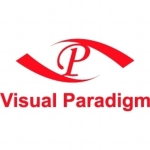We primarily use the solution for business process design.
The simplicity of the solution is great. It doesn't have a lot of menus, so it's easy to navigate.
The fact that it's on-premises allows you to get fantastic speed. It's got a faster response rate, it doesn't lag, and it doesn't have any latency when you're working on it.
The solution has a very comprehensive set of icons. It has a BPMN location and a lot of other different locations you can use at the same time.
Microsoft offers great documentation of the product.
The reason we're moving from Visio to another program is the fact that you can link the library on ARIS or Signavio. These you have to save them on the save drive which as a collaboration. It's not working for us. There needs to be better configuration at this point. We need something a bit more flexible in that sense.
The scalability is limited.
If you look at ARIS, for example, or Signavio, the flowchart combines all the details and with the click of a button I can create a process manager. That would be something that Visio could add. It would cut my workload in half. Currently, once I'm done with drawing the flowchart, I need to take it and put it in that document and then explain what the flowchart is.
We've been using the solution for four to five years at this point.
The stability is good. It's reliable. It doesn't crash on us, or freeze. I don't recall any bugs or glitches.
The scalability is average. It's not as scalable as other options. Organizations that need to expand it may run into issues.
We have about five to ten users on the solution at our company.
I've never required technical support. I can't speak to the level of service they provide.
That said, there is great documentation, so it's pretty easy to troubleshoot by referencing those if you need to.
We've tried ARIS and Signavio. We're still looking for a solution that can replace Visio for us. We're looking for something that can link our library.
In our organization, the IT department takes care of the initial setup. I wasn't part of the deployment process.
We're just a customer. We don't have a business relationship with Microsoft.
We're using either the 2015 or 2016 version of the solution.
The first question a company needs to determine how complex the processes are and how much depth, how much detail they want to document. If it's simpler and they want to get away from the flow chart and then present it somewhere else (such as on a PowerPoint or a report) Visio is a great option.
However, if you want to actually manage your processor, simulator, have a database, or have workflows in order to get approval within different departments or, for example, create documents after a flowchart, then I'd recommend other programs.
Overall, I'd rate the solution seven out of ten.

















